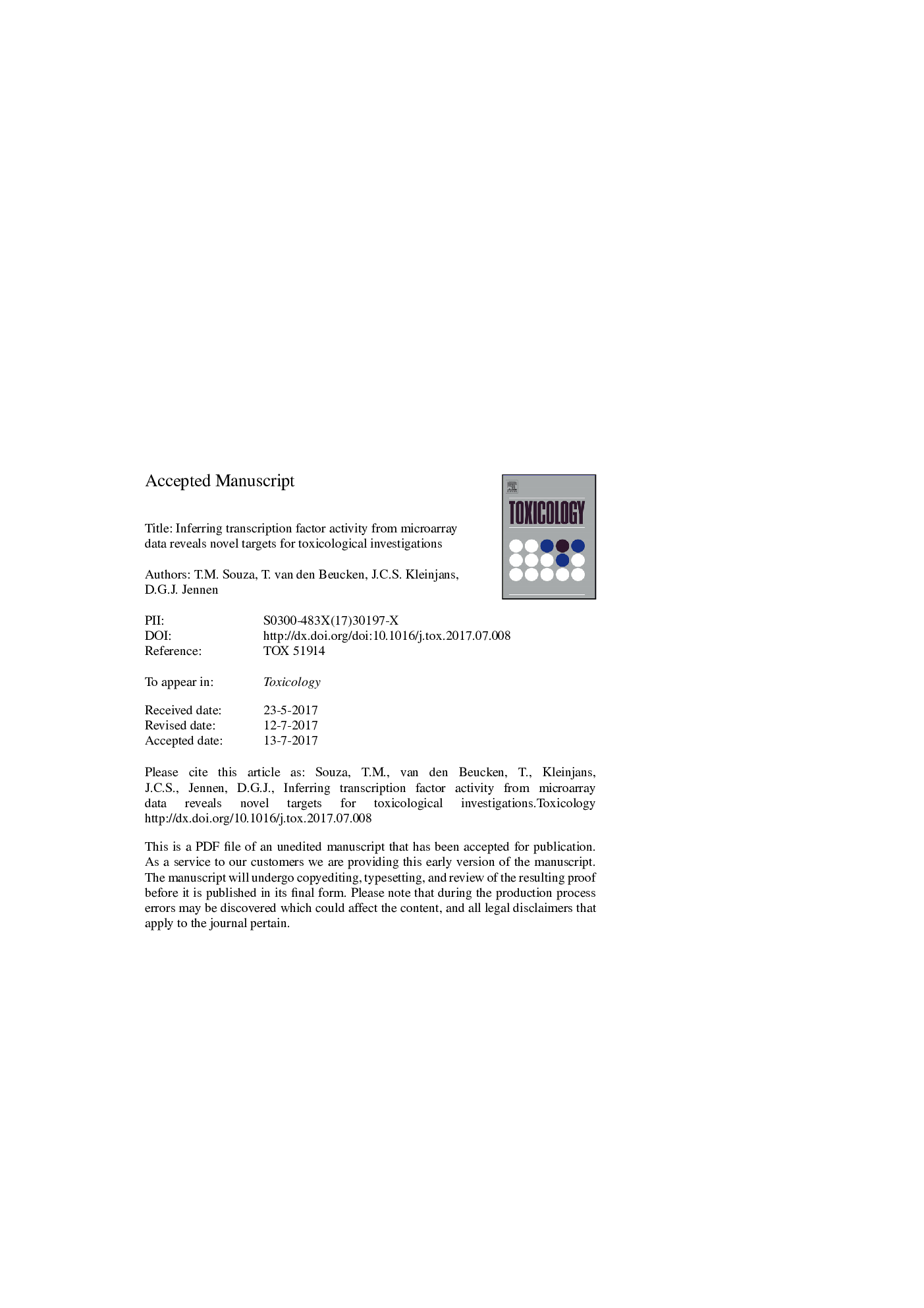| کد مقاله | کد نشریه | سال انتشار | مقاله انگلیسی | نسخه تمام متن |
|---|---|---|---|---|
| 5561729 | 1562283 | 2017 | 21 صفحه PDF | دانلود رایگان |
عنوان انگلیسی مقاله ISI
Inferring transcription factor activity from microarray data reveals novel targets for toxicological investigations
ترجمه فارسی عنوان
فعالیت عامل فاکتور رونویسی را از داده های ریزش مو نشان می دهد اهداف جدید برای تحقیقات سم شناسی
دانلود مقاله + سفارش ترجمه
دانلود مقاله ISI انگلیسی
رایگان برای ایرانیان
کلمات کلیدی
موضوعات مرتبط
علوم زیستی و بیوفناوری
علوم محیط زیست
بهداشت، سم شناسی و جهش زایی
چکیده انگلیسی
Transcription factors (TFs) are important modulators of the inducible portion of the transcriptome, and therefore relevant in the context of exposure to exogenous compounds. Current approaches to predict the activity of TFs in biological systems are usually restricted to a few entities at a time due to low-throughput techniques targeting a limited fraction of annotated human TFs. Therefore, high-throughput alternatives may help to identify new targets of mechanistic and predictive value in toxicological investigations. In this study, we inferred the activity multiple TFs using publicly available microarray data from primary human hepatocytes exposed to hundreds of chemicals and evaluated these molecular profiles using multiple correspondence analysis. Our results demonstrate that the lowest dose and latest exposure time (24 h) in a subset of chemicals generates a signature indicative of carcinogenicity possibly due to DNA-damaging properties. Furthermore, profiles from the earliest exposure time (2 h) and highest dose creates clusters of chemicals implicated in the development of diverse forms of drug-induced liver injury (DILI). Both approaches yielded a number of TFs with similar activity across groups of chemicals, including TFs known in toxicological responses such as AhR, NFE2L2 (Nrf2), NF-κB and PPARG. FOXM1, IRF1 and E2F4 were some of the TFs identified that may be relevant in genotoxic carcinogenesis. SMADs (SMAD1, SMAD2, SMAD5) and KLF5 were identified as some of potentially new TFs whose inferred activities were linked to acute and progressive outcomes in DILI. In conclusion this study offers a novel mechanistic approach targeting TF activity during chemical exposure.
ناشر
Database: Elsevier - ScienceDirect (ساینس دایرکت)
Journal: Toxicology - Volume 389, 15 August 2017, Pages 101-107
Journal: Toxicology - Volume 389, 15 August 2017, Pages 101-107
نویسندگان
T.M. Souza, T. van den Beucken, J.C.S. Kleinjans, D.G.J. Jennen,
